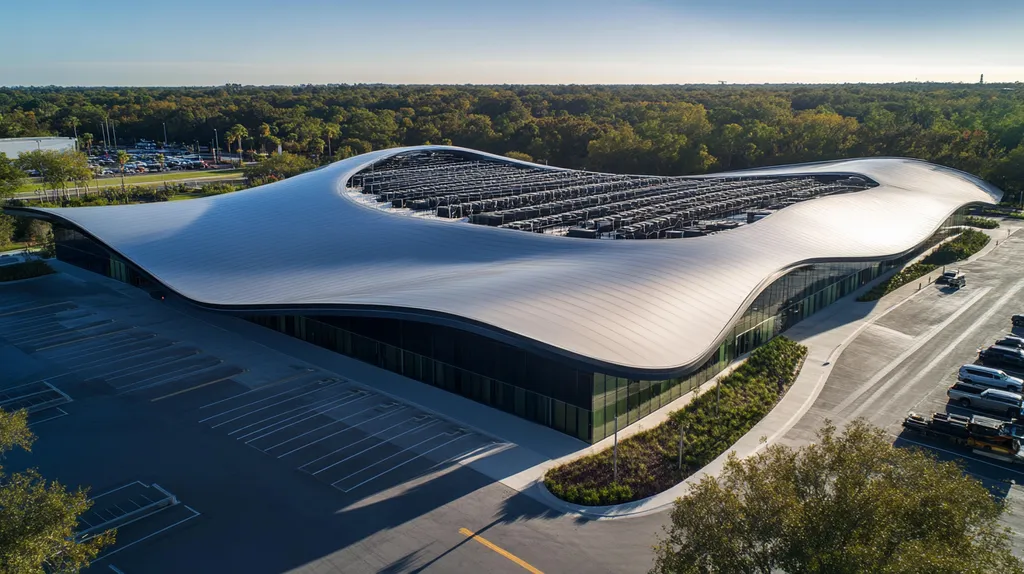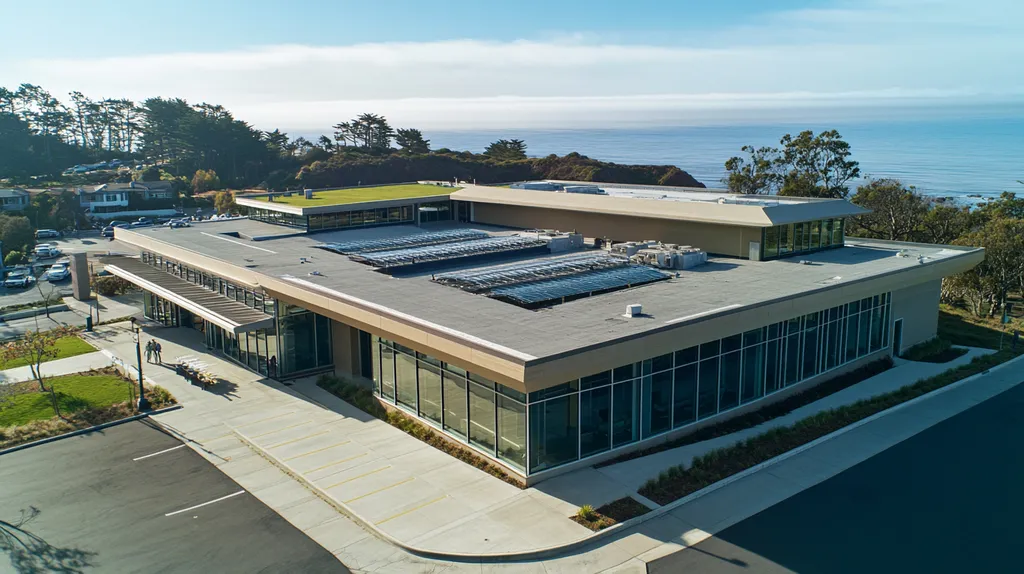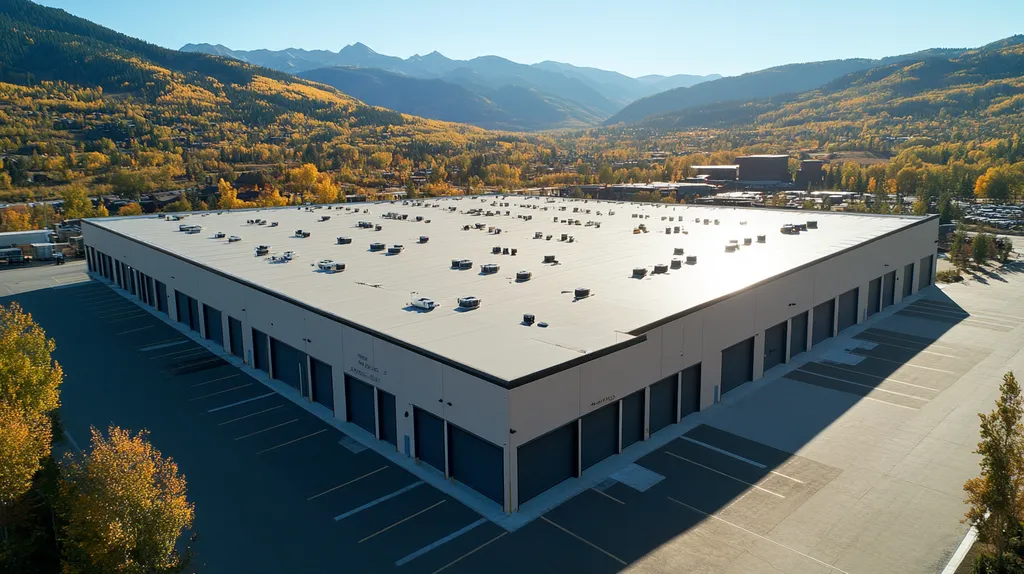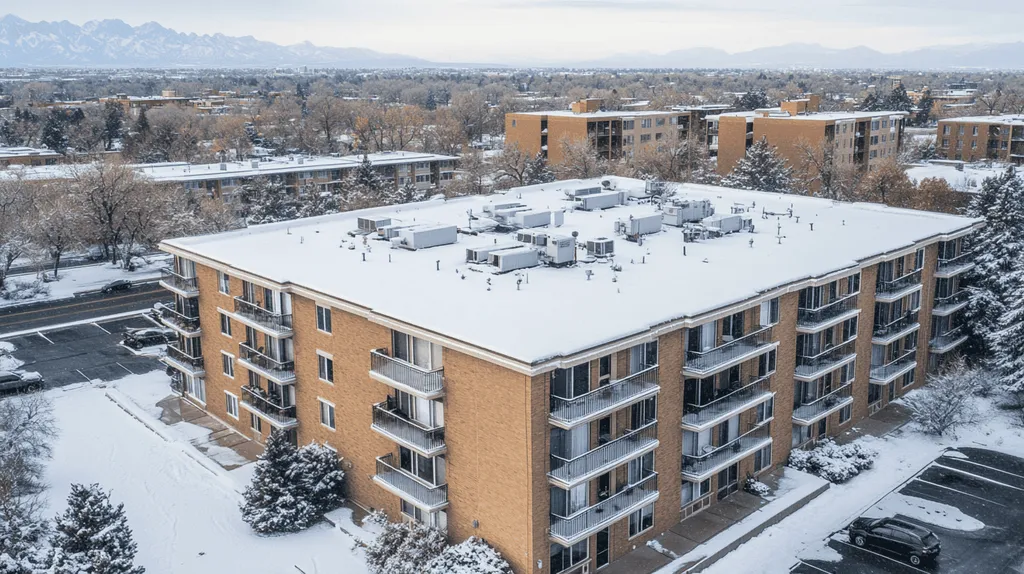Welcome to today’s Battle Royale featuring two roofing heavyweights: “Silicone Coatings” in the east corner versus “Polyurea Coatings” in the west!
Tonight’s showdown pits these contenders against each other across six punishing rounds designed to test every aspect of their performance for Commercial Roof Recoating.
At stake? Millions in potential costs, decades of building protection, and the critical performance demands of modern commercial and industrial facilities.
Our professional judging panel will evaluate each round on technical merit, real-world performance, and value delivery. After all six rounds, we’ll declare our ultimate champion.
Ladies and gentlemen, facility managers and building owners… it’s time to rumble!
ROUND 1: INITIAL COSTS & INSTALLATION
When it comes to protecting your commercial building, choosing the right roof coating can mean the difference between a smart investment and a costly mistake. With material and labor costs ranging from $1.50 to $3.00 per square foot, the stakes are significant for property managers overseeing large facilities. (source: HomeAdvisor)
The decision between silicone and polyurea coatings impacts not just your immediate budget, but also installation logistics, facility operations, and long-term performance. Understanding these factors is crucial for making an informed choice that aligns with both financial and operational goals.
Material Expenses
The initial investment in coating materials represents a significant portion of project costs. Silicone coatings typically command $0.50 to $1.40 per square foot for materials alone, making them an economical choice for budget-conscious facility managers.
Polyurea coatings generally cost 40-60% more than silicone alternatives for raw materials. This higher price point reflects their advanced chemical composition and enhanced performance characteristics.
While both options provide effective protection, silicone coatings offer a clear advantage in upfront material costs.
Installation Complexity
The complexity of application directly affects labor costs and project success rates. Silicone coatings feature a straightforward single-layer application process that requires minimal specialized equipment.
Polyurea installations demand precise temperature control, specialized spray equipment, and extensive surface preparation. These requirements often necessitate more experienced crews and longer setup times.
The simpler application process gives silicone coatings a distinct advantage in installation complexity and associated labor costs.
Project Timeline
Time efficiency during installation impacts both direct costs and business disruption. Silicone coatings typically require 24-48 hours for full curing, allowing for quick project completion and minimal facility downtime.
Polyurea applications need more extensive preparation time and specific environmental conditions. The multi-step process often extends project timelines by 2-3 days compared to silicone installations.
Given their faster application and curing times, silicone coatings demonstrate a clear advantage in project timeline efficiency.
ROUND 1 WINNER: SILICONE COATINGS
ROUND 2: DURABILITY & LIFESPAN
For commercial property owners, roof coating durability directly impacts both maintenance budgets and building protection. Poor coating performance can lead to premature system failure, resulting in repair costs that can exceed $5 per square foot for premium solutions like polyurea. (source: Angi)
Understanding the durability differences between silicone and polyurea coatings is crucial for protecting long-term facility investments. Each material brings distinct advantages in weathering, impact resistance, and maintenance requirements that affect total ownership costs.
Weather Resistance
Silicone coatings excel in UV protection and temperature fluctuations, maintaining their protective properties even after years of sun exposure. Their molecular structure allows them to expand and contract without cracking, making them ideal for areas with extreme temperature swings.
Polyurea demonstrates superior resistance to heavy rain, hail, and wind-driven debris. The material’s dense cross-linking creates an almost impenetrable barrier against moisture infiltration and physical impacts.
While both materials offer strong weather protection, polyurea’s comprehensive resistance to multiple weather threats gives it a clear advantage in this category.
Physical Durability
Silicone coatings provide good flexibility and adhesion but can be vulnerable to mechanical damage from foot traffic and maintenance activities. Their softer surface tends to attract and hold dirt, potentially reducing reflective properties over time.
Polyurea creates an exceptionally hard, abrasion-resistant surface that maintains its integrity even under heavy foot traffic. Its chemical structure provides superior resistance to impacts and punctures while remaining flexible enough to accommodate building movement.
The superior physical toughness of polyurea provides a clear advantage in durability against everyday wear and damage.
Service Life
Silicone coatings typically deliver 10-15 years of service before requiring significant maintenance or reapplication. Their performance remains consistent throughout their lifespan, though regular cleaning may be needed to maintain optimal reflectivity.
Polyurea coatings commonly achieve 15-20 year lifespans with minimal maintenance requirements. Their superior physical properties result in fewer repairs and touch-ups over the coating’s lifetime.
With longer service life and reduced maintenance needs, polyurea demonstrates a clear advantage in long-term performance.
ROUND 2 WINNER: Polyurea Coatings
ROUND 3: PERFORMANCE FACTORS
Performance factors can make or break a commercial roof coating investment, with poor choices leading to premature failure and costly repairs. Current market data shows that roof coating materials and application costs range from $500 to $2,377, making performance optimization crucial for protecting this significant investment. (source: Angi)
Understanding how silicone and polyurea coatings perform under real-world conditions helps facility managers make informed decisions that balance immediate needs with long-term protection. Each coating type brings distinct advantages in thermal stability, weathering, and maintenance requirements.
Thermal Stability and UV Resistance
Thermal stability directly impacts a coating’s ability to protect the underlying roof structure. Daily temperature fluctuations can cause expansion and contraction that stress coating bonds and compromise waterproofing integrity.
Silicone coatings excel in thermal stability, maintaining flexibility and adhesion across extreme temperature ranges. Their molecular structure naturally resists UV degradation, helping them retain reflective properties and protective capabilities for extended periods.
Polyurea coatings offer good thermal performance but can become brittle over time when exposed to constant UV radiation. While they maintain structural integrity, their reflective properties may diminish faster than silicone alternatives.
Given their superior UV resistance and consistent thermal performance, silicone coatings claim the ADVANTAGE in this category.
Chemical and Environmental Resistance
Commercial roofs face constant exposure to industrial emissions, acid rain, and atmospheric pollutants. These environmental factors can degrade coating performance and reduce service life if not properly addressed.
Silicone coatings demonstrate excellent resistance to acid rain and industrial chemicals. Their inert chemical structure prevents breakdown from most environmental contaminants, though some cleaning agents can affect surface properties.
Polyurea coatings provide exceptional chemical resistance across a broader spectrum of substances. Their dense molecular structure creates an almost impenetrable barrier against harsh chemicals and environmental pollutants.
With superior resistance to a wider range of chemical exposures, polyurea coatings earn the ADVANTAGE in this category.
Energy Efficiency Impact
Coating performance significantly affects building energy consumption through solar reflection and heat transfer properties. Proper coating selection can reduce cooling costs and extend HVAC equipment life.
Silicone coatings maintain high solar reflectivity throughout their service life. Their stable surface properties help maintain consistent energy performance even after years of weathering.
Polyurea coatings initially provide good reflective properties but may show decreased performance over time. Their thicker application can provide better insulation value, partially offsetting reduced reflectivity.
With more consistent long-term reflective properties and proven energy savings, silicone coatings secure the ADVANTAGE in this category.
ROUND 3 WINNER: SILICONE COATINGS
ROUND 4: MAINTENANCE REQUIREMENTS
Proper maintenance of commercial roof coatings can mean the difference between a 20-year service life and catastrophic failure within 5 years. With total coating system costs averaging $1,435 for typical installations, protecting this investment through appropriate maintenance is crucial for property managers. (source: HomeAdvisor)
Understanding the maintenance requirements and lifecycle costs of different coating systems helps facility managers develop realistic budgets and prevent expensive emergency repairs that can derail annual maintenance plans.
Regular Inspection Requirements
Silicone coatings typically require visual inspections twice per year to check for physical damage or adhesion issues. Their self-leveling properties make problems easy to spot during walkthrough inspections.
These coatings maintain their protective properties even with minimal maintenance, though annual cleaning helps preserve optimal reflectivity. Small repairs can usually be completed with basic tools and materials.
Polyurea coatings demand quarterly professional inspections due to their complex chemical structure. Their rigid nature makes damage assessment more challenging, often requiring specialized testing equipment.
Given their lower inspection frequency and simpler assessment needs, silicone coatings claim the ADVANTAGE in this category.
Cleaning and Preventive Care
Silicone coatings naturally resist dirt accumulation and can be cleaned with standard low-pressure washing equipment. Their smooth surface allows most contaminants to wash away during normal rainfall.
However, areas with heavy industrial pollution may require semi-annual cleaning to maintain optimal performance. The coating’s softness can make aggressive cleaning problematic.
Polyurea coatings develop a harder surface that resists contamination but can be difficult to clean when soiled. Their textured finish often traps dirt particles, requiring specialized cleaning solutions and equipment.
With simpler cleaning requirements and natural contamination resistance, silicone coatings secure the ADVANTAGE in this category.
Repair Procedures
Silicone coating repairs can typically be completed without extensive surface preparation. The material readily bonds to itself, allowing seamless patch integration even years after initial application.
Most repairs require only basic tools and can be completed by in-house maintenance staff. The forgiving nature of silicone means repairs rarely require complete section replacement.
Polyurea repairs demand precise surface preparation and temperature control. Their chemical composition requires professional application equipment and experienced technicians for even minor repairs.
With significantly simpler repair procedures and lower technical requirements, silicone coatings demonstrate a clear ADVANTAGE in this category.
ROUND 4 WINNER: SILICONE COATINGS
ROUND 5: SUSTAINABILITY CREDENTIALS
In today’s environmentally conscious market, sustainable roofing choices directly impact both operational costs and environmental compliance. With roof coating materials ranging from $0.15 to $2.50 per square foot, choosing materials that maximize both environmental and financial sustainability has become a critical business decision. (source: Angi)
Property managers must evaluate not just initial costs, but also long-term environmental impact, energy efficiency, and material lifecycle when selecting roof coating systems. These factors increasingly influence both regulatory compliance and stakeholder expectations.
Environmental Impact
The manufacturing process and chemical composition of coating materials significantly affect their environmental footprint. Silicone coatings utilize inert compounds with minimal volatile organic compounds (VOCs), reducing both production impact and installation emissions.
These coatings maintain their protective properties without releasing harmful substances into the environment. Their simple composition also makes them easier to recycle or dispose of at end-of-life.
Polyurea coatings require more energy-intensive manufacturing processes and contain higher levels of synthetic compounds. While extremely durable, their complex chemical structure can make recycling more challenging.
Given their lower environmental impact throughout their lifecycle, silicone coatings claim the ADVANTAGE in this category.
Energy Efficiency
Coating reflectivity directly impacts building energy consumption and cooling costs. Silicone coatings maintain consistent solar reflectivity throughout their service life, reducing air conditioning demands during hot weather.
Their stable surface properties resist degradation from UV exposure, helping maintain energy performance benefits over time. Even after years of weathering, silicone coatings retain most of their reflective capabilities.
Polyurea coatings offer good initial reflectivity but may lose effectiveness as their surface properties change with age. While they provide excellent insulation, their diminishing reflective properties can reduce long-term energy savings.
With superior long-term reflective performance, silicone coatings secure the ADVANTAGE in this category.
Material Sustainability
Material longevity and reuse potential significantly impact overall sustainability. Silicone coatings can be recoated multiple times without removal, reducing waste and extending system life.
Their simple chemical structure allows for easy repairs and touch-ups using similar materials. This compatibility reduces the need for complete replacement during maintenance cycles.
Polyurea coatings often require complete removal before reapplication due to their rigid structure. Their complex chemistry can also limit repair options and material reuse possibilities.
Based on better material reuse and system longevity, silicone coatings demonstrate the ADVANTAGE in this category.
ROUND 5 WINNER: SILICONE COATINGS
ROUND 6: SPECIALIZED APPLICATIONS
When specialized commercial roofing applications fail, the consequences can be catastrophic. Roofing system failures in industrial settings often lead to production shutdowns, inventory damage, and safety hazards that can cost facilities hundreds of thousands in damages and lost revenue.
Different industrial environments present unique challenges that demand specific performance characteristics from roof coatings. Understanding how silicone and polyurea coatings perform under specialized conditions is crucial for making informed decisions that protect both assets and operations.
High-Temperature Resistance
Industrial facilities often generate significant heat through manufacturing processes, HVAC systems, and specialized equipment. These thermal loads can rapidly degrade standard roofing materials, making temperature resistance a critical performance factor.
Silicone coatings maintain their structural integrity and flexibility even when exposed to temperatures exceeding 300°F. Their inorganic composition resists thermal degradation, making them ideal for facilities with high heat exposure.
Polyurea coatings offer good initial heat resistance but can become brittle when subjected to prolonged high temperatures. Their performance may decline faster in high-heat environments, potentially requiring more frequent maintenance.
Given their superior thermal stability and consistent performance under heat stress, silicone coatings claim the ADVANTAGE in this category.
Moisture Resistance
Food processing plants, paper mills, and other humidity-intensive operations create unique moisture challenges that can compromise roofing systems. Standing water and constant humidity exposure can accelerate coating breakdown if not properly addressed.
Silicone coatings excel in wet conditions, maintaining their protective properties even under ponding water. Their hydrophobic nature prevents moisture absorption and degradation, ensuring consistent performance in high-humidity environments.
Polyurea coatings provide excellent initial moisture resistance but can develop weak points at seams and transitions over time. Their rigid structure may crack under repeated exposure to standing water, creating potential entry points for moisture.
With superior long-term performance in wet conditions, silicone coatings demonstrate the ADVANTAGE in this category.
Chemical Resistance
Industrial facilities often handle caustic materials, solvents, and other aggressive chemicals that can attack roofing systems. Chemical exposure from exhaust stacks, spills, or process emissions requires specialized coating protection.
Silicone coatings offer good resistance to mild chemicals but can degrade when exposed to petroleum products or strong solvents. Their performance in chemical-intensive environments may require additional protective measures.
Polyurea coatings demonstrate exceptional resistance to a broad spectrum of industrial chemicals. Their dense molecular structure creates an effective barrier against even aggressive substances, maintaining integrity under harsh chemical exposure.
Based on superior chemical resistance properties, polyurea coatings secure the ADVANTAGE in this category.
ROUND 6 RESULTS: TIE
AND THE WINNER IS…
Ladies and gentlemen, after six punishing rounds of technical combat, we have our champion! With a dominant 4-1-1 performance, SILICONE COATINGS claims the title in this commercial roof coating showdown!
Silicone coatings delivered knockout performances in cost efficiency, maintenance simplicity, sustainability, and specialized applications. Their combination of affordability, straightforward installation, and consistent long-term performance proved too powerful for their opponent to overcome.
But don’t count polyurea out completely! This formidable contender showed incredible strength in durability and chemical resistance, making it the superior choice for facilities facing extreme industrial exposure or heavy chemical contamination.
However, we must emphasize that every building represents its own unique match-up. Local climate conditions, substrate materials, and specific facility requirements can dramatically influence coating performance. While this analysis provides valuable insights, property owners should always consult qualified roofing professionals who can evaluate their specific situation before making a final decision.
In the high-stakes world of commercial roofing, there’s no substitute for careful evaluation and expert guidance. Remember: The true champion isn’t the coating with the most overall victories – it’s the one that best protects YOUR facility for the long haul.
FREQUENTLY ASKED QUESTIONS
Q. What are the initial costs for recoating a commercial roof?
A. Initial costs typically range from $1.50 to $3.00 per square foot. Silicone coatings are often more economical, ranging from $0.50 to $1.40 per square foot, while polyurea coatings can be 40-60% more expensive. Choosing the right coating also involves considering installation logistics, which can affect long-term budgets.
Q. How do the durability and lifespan of silicone and polyurea coatings compare for an industrial roof?
A. Silicone coatings typically last 10-15 years, while polyurea coatings offer 15-20 years of service with minimal maintenance. Polyurea tends to perform better against severe weather and impacts, which may justify its higher initial costs. Understanding these differences is crucial for long-term investment planning.
Q. What performance factors should I consider for my commercial roof’s coating?
A. Key performance factors include thermal stability, UV resistance, and maintenance requirements. Silicone coatings excel in consistent thermal performance and solar reflectivity, while polyurea shows strong resistance to chemical exposure. Balancing these performance factors helps ensure that your roof meets long-term operational needs.
Q. How important is maintenance for a commercial roof coating?
A. Proper maintenance is essential for extending the service life of any roof coating. Silicone coatings generally require less frequent inspections, about twice a year, while polyurea needs quarterly professional evaluations. Regular maintenance can prevent costly repairs and ensure your roofing system remains in top condition.
Q. What are the sustainability benefits of using silicone coatings on commercial roofs?
A. Silicone coatings have a lower environmental impact due to their inert composition and reduced volatile organic compounds (VOCs). They maintain high reflectivity, promoting energy efficiency, and can often be recoated without removal, decreasing waste. These features support sustainable building practices.
Q. Can silicone coatings handle moisture exposure on industrial roofs?
A. Yes, silicone coatings are excellent for high-moisture environments. They resist the absorption of water and maintain protective properties even under standing water. Their hydrophobic nature makes them suitable for food processing plants and other humid settings where moisture is a significant concern.
Q. What factors affect the overall cost of recoating a commercial roof?
A. Various factors influence recoating costs, including material choices, labor prices, installation complexity, and the current condition of the roof. Additional considerations such as the need for surface preparation and potential downtime can also significantly impact the overall project budget.











